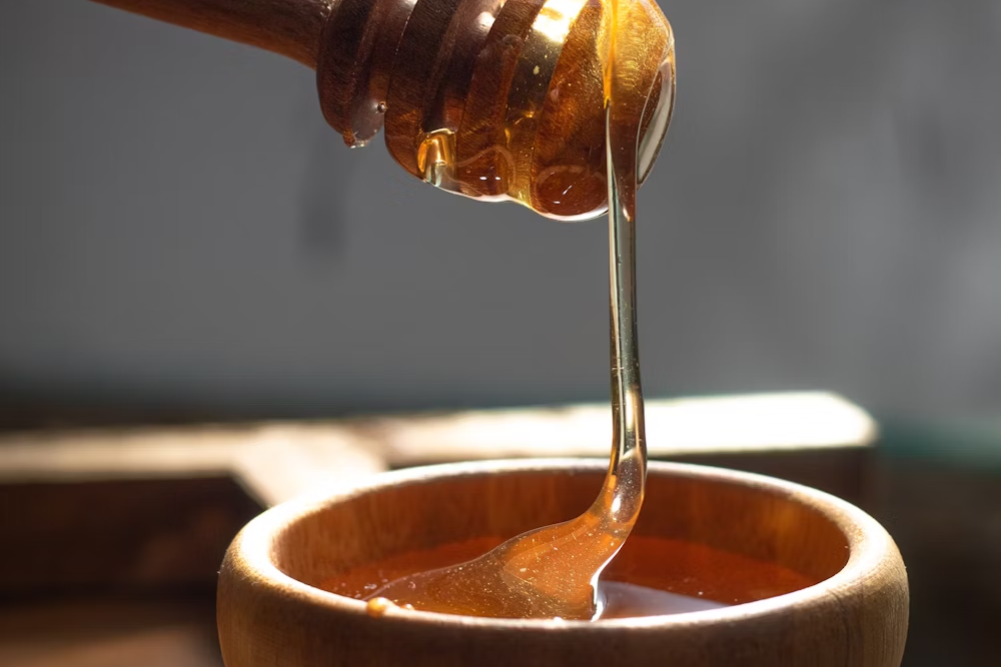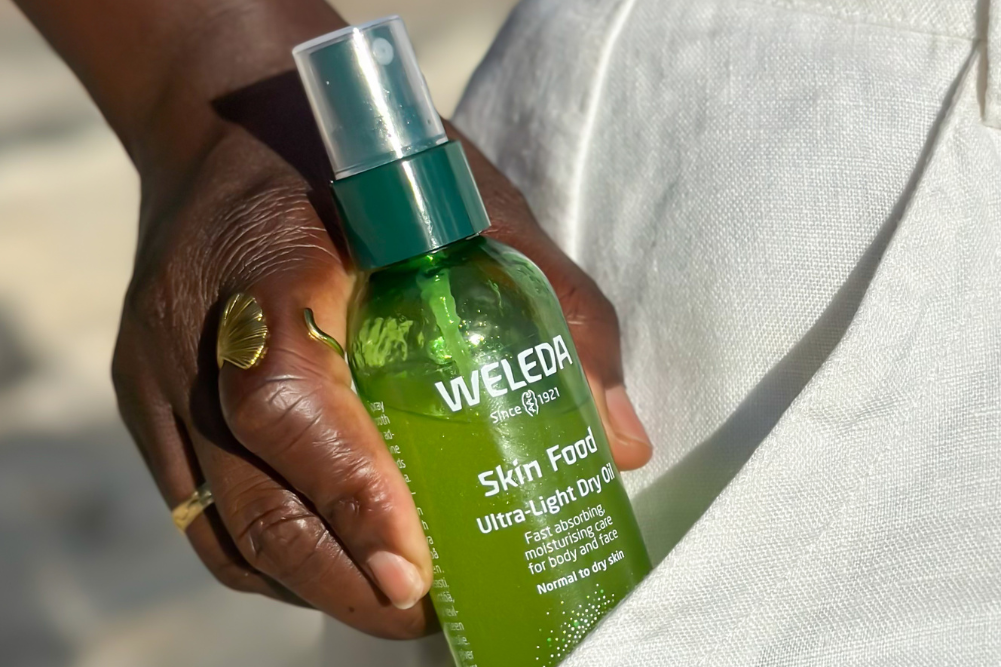Fermented foods for beauty
It’s easy to get caught up in the latest anti-ageing hype, from stem-cell elixirs and sheep’s placenta to laser resurfacing. However, tackling wrinkles, sagging skin and sunspots from the outside is only temporary fix and does little to reach the cause of our skin’s woes once we hit the age where gravity and time take hold.
Ageing as we’ve come to know it through media campaigns and movies isn’t inevitable, nor is it treatable in the long term simply with topical creams. But understanding why this is so may be the key to slowing the ageing process — and learning to love the skin we’re in.
Despite what beauty industry hype suggests, applying a chemical-based product to the outer layers of the skin, the epidermis, can do very little to plump and nourish what’s underneath — the dermis — which is made up of collagen, elastin, nerves and follicles. Rather, it’s primarily the body’s overall health that determines our outer glow and youthful looks, and such health relies on a balance of nutrition, adequate sunshine (but not to the point of sunburn) without sunblock or sunscreen, regular exercise and a positive outlook.
How (and why) we age
From about the age of 30, the skin begins to lose elasticity, explains anti-ageing expert Dr Marilyn Golden, who recently published her first book, Golden Energy, which boasts living food recipes for health, beauty and longevity.
“Skin ages as an enzyme called NOX becomes activated,” she says. “Fibrin, elastin and collagen degenerate and skin cells repair less efficiently. Youth cluster genes in the skin contain the code for expression of proteins, fibrin, collagen, elastin and hydration … as skin ages, the ageing genes express differently.”
Dr Golden also says testosterone receptors in the skin bind to testosterone. This becomes more active in older women, which leads to breakdown of fibrin and elastin. This is what increases wrinkles.
“In traditional Chinese medicine theory, the skin is part of the lung meridian system and is paired with the large intestine meridian system,” she says. “(In short) the skin reflects the health of the gut.”
Nutrition is key
While the natural ageing process, as well as sunburn, environmental pollution and alcohol, contributes to premature skin ageing, nutrition is key if you want to repair damage and retain an outer glow. “The lesson is that both internal nutrition of high nutrient density and external application of appropriate antioxidants are necessary to inhibit skin ageing,” says Dr Golden.
Studies have confirmed the connection between gut and skin health, with many dermatologists witnessing gut and skin issues occurring together. Research by Dr H. Zhang, published in the Journal of Dermatology in 2008, studied 13,000 adolescents. Those with acne were more likely to suffer from gastrointestinal distress such as constipation and heartburn. It was also discovered that abdominal bloating — a sign of intestinal dysbiosis and inflammation — was 37 per cent more likely to be associated with acne.
Ancient Greek physician Hippocrates, who famously said, “All disease begins in the gut”, also knew well that what we eat largely determines our good health or lack of it. Fill the stomach with junkfood and sugary drinks and we soon become ill, and our skin sallow. It’s when we do the opposite — eat organic wholefoods and drink spring water — that our health thrives and the skin clears. Yet there’s more we can do than just eat our greens to ward off skin conditions and allow it to become vibrant from a cellular level.
The friendly flora factor
In the age of antibiotics, the probiotic is often relied on to re-populate the gut with beneficial bacteria. However, Lactobacillus acidophilus — known as friendly flora — isn’t simply available in pill form, nor does it only do a great job of bringing our intestinal health back to balance. Probiotics as fermented foods are a potent form of anti-ageing that can improve inflammatory skin conditions and boost the skin’s overall health, says Body Ecology’s Donna Gates, who has long studied the beneficial effects of good bacteria.
“Fermented foods naturally heal the gut mucosa and nurture a healthy inner ecosystem,” Gates says. “The research suggests that probiotic-rich foods are an essential component in maintaining clear, healthy skin, as well as a clear, healthy mind.”
Dr Golden agrees. “Fermented foods and probiotics may benefit digestion and absorption of nutrients, which will in turn improve skin appearance,” she says.
Eating fermented fare such as raw sauerkraut and kimchi leads to a healthier gut and in turn fewer blemishes and rash outbreaks, and cells begin to repair. Some skincare experts and dermatologists suggest applying the juice from fermented plant-based food directly onto the skin. This natural approach to skin rejuvenation helps nourish the outer layers, with the skin becoming more vibrant and youthful. However, it’s when these foods and drinks are consumed that the true and lasting Beauty benefits are witnessed.
A lesson from our ancestors
Our fascination with good bacteria isn’t new. Fermenting foods such as milk dates back hundreds of years. However, it wasn’t until the 1930s that physicians began to take note of its undeniable healing properties and word began to spread.
Yet it was 20 years earlier that Nobel Prize winner bacteriologist Élie Metchnikoff noticed that Bulgarians, who consumed large quantities of fermented milks, enjoyed a longer lifespan than most. Bulgarian peasant Baba Vasilka lived to 126, while her son, Tudor, died at 101, their longevity attributed to the regular drinking of “soured” milk.
While milks remain a popular way to include good bacteria into the diet, according to Hippocrates Health Institute director, Dr Brian Clement, raw organic cabbage sauerkraut and root vegetables, which are chopped and soaked in fermented cabbage juice, are “at the top of the list of best choice”. He says this is due to the high amount of nutrients, including sulfur, which fights disease, inflammation and infection.
How much is enough?
Sitting down to a meal of fermented food once a week won’t guarantee better skin. Rather, it’s the habit of including a good amount of food that boasts beneficial bacteria into your diet. Dr Clement says it’s necessary to consume about 340–350g of raw sauerkraut as a snack or appetiser three to four times a week. This, he says, would “go a long way in making the youth factor rise”.
Still, it’s moderation that’s key when changing one’s diet initially, suggests Gates, who says overdoing fermented foods before the gut has had time to begin healing and cleansing can aggravate certain conditions, such as acne and migraines.
“Many fermented foods contain tyramine, arginine and histamine,” she says. “These are all molecules that affect vasculature — in fact, while too much tyramine can increase blood pressure, it has been found that arginine actually reduces blood pressure. Histamine, the molecule involved in an allergic response, also promotes blood flow. They all have been found to aggravate chronic migraines.”
A return to colour
When we think of skin, our hard-working scalp is little considered, but it’s a vital part of the body’s largest organ. Besides lessening the chemical load we put on it with the use of colours, shampoos and conditioners, its health also relies on what we put in our mouths. A healthy scalp, free of product build-up, means blood is circulating and hair is soft and vibrant.
Natural health pioneer and founder of the Hippocrates Health Institute, Ann Wigmore, knew very well the benefits of a healthy scalp and the role fermented foods played in helping it reach such a state. She says she witnessed her grey hair return to its natural dark colour after regularly consuming rejuvelac, a juice made from fermenting wheat berries.
Dr Clement confirms that consistently including fermented foods in your diet — and directly onto the scalp — can help its health while assisting grey hair reversal. “Fermented foods can help all of your skin, including your scalp,” he says. “The juices of this plant-based fare can actually be directly applied to the scalp. When these organic choices have high zinc and copper content they can help to reverse premature greying of one’s hair.”
He adds, “Every long-lived culture has consumed fermented food. We have been utilising them successfully here at the Institute over the past 57 years with hundreds of thousands of people. They really are a superior food for serious health seekers.”
The Real Food Chef’s Fermented Dairy-free Yoghurt with Added Probiotic Powder
2 cups raw cashews
1 cup good, clean water (alkaline if possible pH 7.5)
1½ tsp really good probiotic powder (dairy-free is found in the fridge at your local healthfood store)
Put all ingredients into a blender and mix until creamy, silky and smooth so it looks like plain yoghurt. Add just a little more water until the blade stops moving. Pour into a non-metal bowl, cover with a tea-towel and let sit for 12–16 hours, then mix with a whisk.
This is delicious and can be made into fruit yoghurt by blending up fresh mango or any fresh berries and swirling it into the fermented yoghurt. Find more cultured recipes from The Real Food Chef at www.facebook.com/TheRealFoodChef
Donna Gates’ Cultured Vegies
One important secret to making really delicious cultured vegies is to use freshly harvested, organic, well-cleaned vegetables. After washing the vegies, spin them dry. It’s essential that you scald your equipment in boiling water before you use it. For more recipes, visit www.bodyecology.com
1 head green cabbage, shredded in a food processor
1 bunch kale, chopped very finely by hand
5 or 6 collard leaves, chopped very finely by hand
½ head cauliflower, broken in tiny florets or chopped very, very small
2–3 carrots, shredded in a food processor
2–3 cloves garlic, peeled & minced
1 tbsp celery seeds
1 tbsp dried oregano
½ tbsp dried basil
Using a starter culture to ensure a perfect and potent product, dissolve a package of Body Ecology Veggie Starter Culture in ¼ cup warm (32°C) filtered water. Add Body Ecology’s EcoBloom to feed the starter if desired. You might also use a ½ tsp of Rapadura sugar or a little honey.
Let this starter mixture sit for about 20 minutes or longer while the L. Plantarum and other bacteria wake up and begin enjoying the sugar. Add this starter culture to the brine in step 3 below.
Begin preparing vegetable mixture
1. Combine all vegies, seeds and herbs in a very large bowl.
2. Remove about half of the above mixture and put into a blender.
3. Add enough filtered water to the blender to create a “brine” the consistency of thick juice.
4. Blend well then add the above starter culture to this brine.
5. Add brine with culture back into vegies, celery seeds and herbs from step one.
6. Mix together well. Note: If your blender is small you may have to do step 3 in two batches but you only need to add the starter culture once.
7. Pack mixture down into as many glass jars as necessary to hold all the mixture. Use a potato masher or your fist to pack vegies very tightly. You want to force out most of the air.
8. Fill container almost full but leave about 5cm of room at the top for vegies to expand.
9. Roll up several outer cabbage leaves into a tight “log” and place them on top to fill the remaining 5cm space. Clamp jar closed or screw on lid very tightly.
Let vegies sit at approx 21°C or room temperature for at least a week. Two weeks may be even better. Refrigerate to slow down fermentation.
The fermented vegies will keep in the fridge for many weeks, becoming softer and more delicious as time passes. Eat at least ½ cup of cultured vegies with every meal and enjoy.
Shannon Dunn is a wellness writer and eco beauty editor. Visit her website www.ecobeautyeditor.com. Email her at shannon@ecobeautyeditor.com







